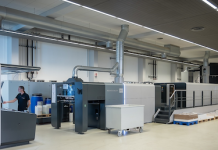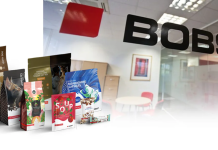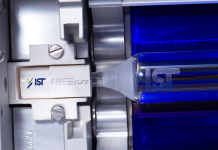Novus Holdings has shared insight into a number of myths surrounding paper, print and ink, emphasising the need to rethink our beliefs about these aspects, especially in the face of an increasingly digital world.
‘The perception that paper-based mediums are irrelevant and environmentally-unfriendly is untrue, as research points to the contrary. For example, paper is one of the few products that is truly sustainable, as it is made from renewable resources,’ said Peter Metcalfe, group executive: sales and marketing Novus Holdings.
Metcalfe, together with Deon Joubert, country manager at Two Sides South Africa, bust some of the most common myths associated with using paper, print and ink.
Myth 1: using paper destroys forests
Metcalfe says that paper production supports sustainable forest management. It isn’t about using less paper, but rather about using the right type of paper. ‘We ensure that we comply with responsible and ethical paper sourcing practices by using paper suppliers that are accredited with the globally-recognised Forest Stewardship Council (FSC) certification, and the Programme for Endorsement of Forest Certification (PEFC). These accreditations ensure that the printed products can be traced back to their points of origin from responsible, well-managed forestry, controlled and recycled resources.’
In addition, according to international data, between 2005 and 2015, European forests grew by 44,000 square kilometres – this is an area bigger than Switzerland.
Myth 2: Electronic communication is better for the environment
If you think that getting your social media fix on your digital device or smartphone is more environmentally-friendly than reading your favourite book, newspaper or magazine, think again. ‘Messages that encourage consumers to go paperless to save the environment are misleading. E-waste, the carbon footprint and full lifecycle of electronic products should be taken into account,’ says Joubert.
The United Nations Environment Programme in 2015 estimated that 41 million tonnes of e-waste from computers, smart phones and similar devices is generated each year by the electronic industry. In addition, reports predict that the ICT industry is posed to be responsible for up to 3.5% of global emissions by 2020 – this is on par with global emissions from the aviation sector.
In addition, mega data centres that store information remotely, or ‘the cloud’, require large masses of electricity. A report that was released in 2017 suggests that data centres will consume 1/5 of the earth’s power by 2025 – making them one of the biggest polluters in just seven years. Currently data centres in the USA use more than 90 billion kilowatt-hours of electricity a year, requiring roughly 34 giant (500-megawatt) coal-powered plants.
Myth 3: I can read just as well on the screen as on a book
Neuroscience suggests that consuming printed material is both easier to understand and more memorable. One reason could be because printed material activates a different part of the brain than when reading something online. A study conducted by a Canadian company compared the effects of paper marketing (direct mail) with digital media (email and display ads). It found that the direct mail was easier to process mentally and required 21% less cognitive effort to process than digital media.
In addition, a New York Times article suggested that when children aged 3-5 were read to using an e-reader, they had a lower reading comprehension score than children being read to from a traditional story book. ‘Interestingly, the printed book market is bucking the trend when it comes to online versus print consumer purchasing behaviour, not only in SA but also globally. More people are buying books, perhaps precisely because the experience of reading a book provides so much more than reading a book on a device,’ says Joubert.
Myth 4: Print is no longer relevant
‘The printing industry is a significant contributor to the economy, with an annual turnover of more than R60 billion. In addition, the printing and packaging industries employ more than 45,000 people in 1228 printing and 268 packaging enterprises,’ says Joubert. If one includes the forestry, pulp and paper and both formal and informal recycling sectors, this number swells to 145,000 jobs.
Besides the impact on the South African economy and the direct contribution to people’s livelihoods, Joubert says that paper-based communication is a necessary and vital medium in this cluttered digital world especially to those without reliable internet connections. A global study conducted by Two Sides in 2017 found that consumers trust, enjoy and gain a deeper understanding of information read in print. Many experienced digital information ‘overload’, and showed concerns that their personal information held electronically was at risk.
Myth 5: Printing is bad for the environment
‘Since 2005 we have invested over R100 million in environmentally responsible practices,’ says Metcalfe, adding that Novus Holdings has taken the lead in the South African print industry in recognising the impact of print production processes on natural resources and implementing practices and policies to minimise these effects.
Ways in which the group reduces its reliance on natural resources includes energy regeneration though its Biomass Boiler and toluene recovery. Toluene is a thinning agent used in gravure inks to ensure low viscosity. At Novus Holdings, 95% of this substance is recovered and sold back to the ink manufacturers for re-use.
The Biomass Boiler reduces electricity consumption by generating steam to power some of the company’s printing presses. By introducing such measures, Novus Holdings has been able to reduce its carbon footprint from 105,285 tonnes of C02 emissions in 2017 to 98,387 tonnes in 2018.
‘For us, doing the right thing is not just about meeting legal requirements. We set the bar higher ourselves, as sustainable development that takes into account our impact on the environment, is key to our business strategy,’ says Metcalfe.





















